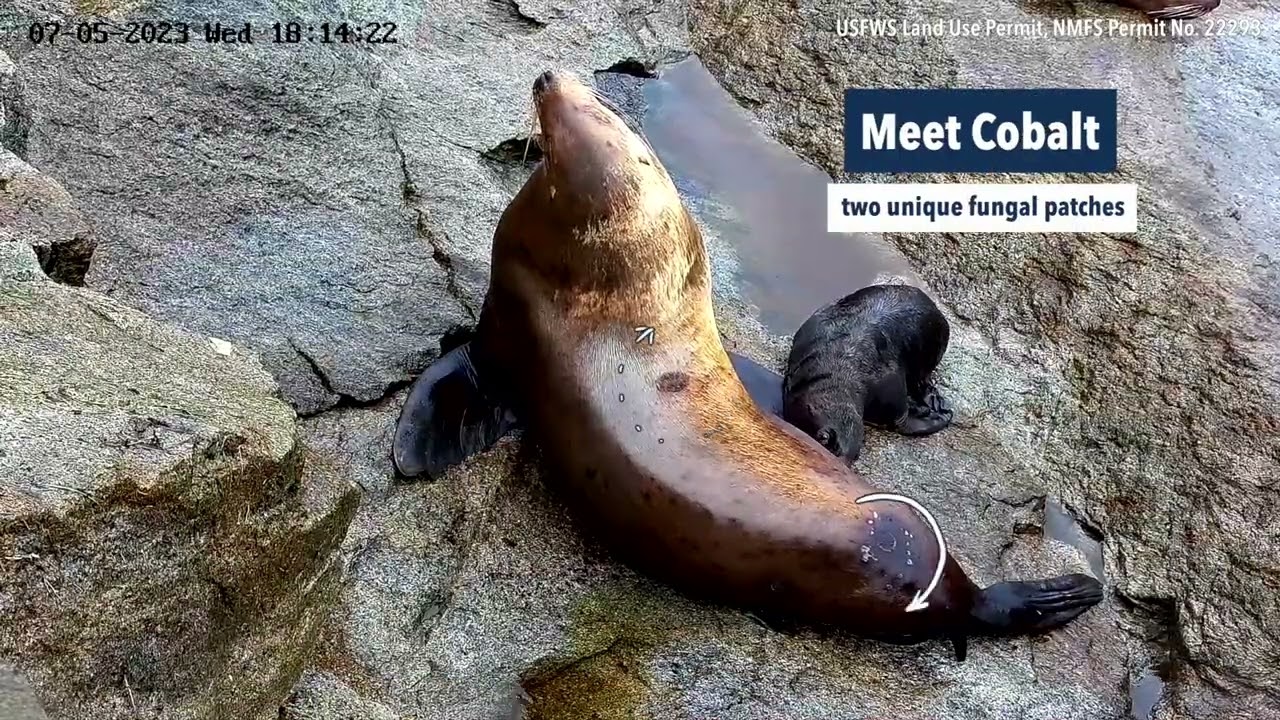Summary:
1. Introduction to Steller Sea Lions and the Chiswell Island Rookery
2. The Importance of Researching and Monitoring Steller Sea Lions
3. Remote Monitoring Using Remotely Operated Cameras
4. Naming Scheme for Unidentified Sea Lions
5. Unique and Fascinating Discoveries through Data Collection.
Hey there, wildlife enthusiasts! Today, we’re diving deep into the captivating world of Steller sea lions and uncovering the incredible research being conducted at the Chiswell Island rookery. For over 20 years, the dedicated scientists at the Alaska SeaLife Center have been tirelessly monitoring the endangered Steller sea lion population. Through the use of remotely operated cameras, they have been able to collect invaluable data not only about these majestic marine mammals but also about the entire ecosystem they call home. So, grab your snorkel, and let’s dive right in!
Imagine observing and studying these incredible creatures without disturbing them in their natural habitat. That’s precisely what ASLC scientists have achieved through remotely operated cameras. These sophisticated devices are strategically positioned around the Chiswell Island rookery, capturing Steller sea lions’ daily lives and behaviors without any interference. This remote monitoring allows scientists to comprehensively understand these animals while minimizing any potential disturbances.
Let’s look at the naming scheme the research team has adopted for the unidentified sea lions that frequent the Chiswell Island rookery. Drumroll, please! This year, the team has come up with some truly intriguing names. Brace yourself for Taboo, Cribbage, Yahtzee, and Battleship! Yes, you heard that right! Each sea lion is given a name from a unique and exciting theme every year. These names not only add a touch of charm and personality to these majestic creatures but also serve as valuable identifiers for future tracking and research purposes.
But why is all this research so important, you may wonder? Apart from ensuring the conservation and preservation of the Steller sea lion population, the data collected through these remote cameras have provided vital insights into the larger ecosystem these animals inhabit. By understanding Steller sea lions’ behavior, population dynamics, and interaction patterns, scientists can garner a deeper comprehension of the delicate balance that supports the entire ecosystem.
The Chiswell Island rookery itself is a fascinating microcosm of life. ASLC scientists have made numerous unique and truly fascinating discoveries during the research period. For instance, did you know that Steller sea lion pups use vocalizations to communicate with their mothers? These distinctive calls act as a “name tag” that allows the mother sea lion to locate and recognize her pup amidst the crowded rookery. It’s a remarkable example of communication and familial bonds within the animal kingdom.
Moreover, these remote cameras have also given us a sneak peek into the intricate social structure of Steller sea lions. Within rookeries, dominant males establish territories to assert their rightful place at the top of the hierarchy. This dominance is not only reflected in their physical presence but also through vocalizations, body postures, and even threatening displays. Witnessing these interactions through the remote cameras is like seeing a real-life soap opera unfold before you.
Beyond their role as charismatic creatures, Steller sea lions are considered a keystone species within their ecosystem. Their presence, or lack thereof, significantly impacts the entire food chain. By studying their behavior and population trends, scientists gain insights into the overall health and stability of the marine environment. It constantly reminds us how interconnected and delicate our natural world is.
As we wrap up this dive into the world of Steller sea lion research, let’s reflect on the invaluable contributions made by the ASLC scientists through their dedication and innovative use of remote cameras. Thanks to their efforts, we are gaining a deeper understanding of these remarkable animals and their vital role in maintaining a healthy ecosystem. So, the next time you find yourself by the ocean, take a moment to appreciate and cherish the wonders of nature that surround us. And who knows, you might glimpse Taboo, Cribbage, Yahtzee, or Battleship, the stars of the Chiswell Islands rookery!
*****
Source Description
ASLC scientists have monitored the endangered Steller sea lion population at the Chiswell Islands rookery for over 20 years through remotely operated cameras, and the data that has been collected has taught us not just about these amazing marine mammals but about the entire ecosystem they live in.
Every year, this team chooses a naming scheme for unidentified sea lions that come to the Chiswell Island rookery.
Can you guess what it is?
New names from this year:
Taboo
Cribbage
Yahtzee
Battleship


